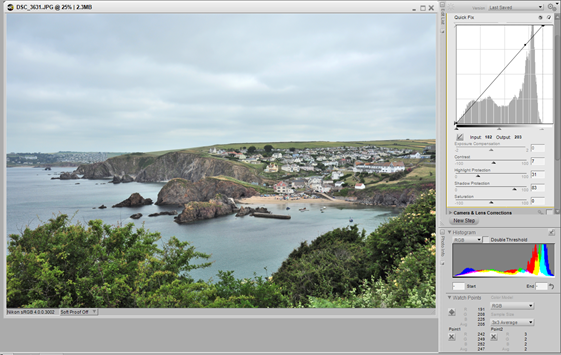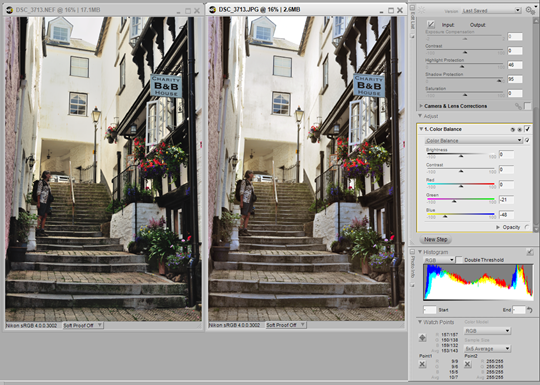Another well attended and interesting study day in Thatcham.
Despite arriving late , we caught the tail end of the presentation of Eddy's project on the Gilbert Court residents portraits with audio commentaries, there was some discussion about the way his interviews were presented and how this enhanced the strength of the portraits. I thought it was an interesting concept and well presented.
John followed on from his last project using texts with photographs and showed us images of paper butterflies inscribed with messages of hope and remembrance from the Eden project. These he had paired with images, taken in the area on the same day. He was attempting to link the images with the words on the butterfly and also show a narrative by arranging 10 pairs in a sequence or two rows of five. Perhaps I missed something but there was only one pair that I could make a connection between and I failed to see the narrative in either arrangement. An interesting idea which needs developing further I think.
We congratulated Keith on his achievement in passing the Advanced Photography course at Level 3. He is continuing with MOP. He updated us on his Women Landscape Photographers project . As Catherine was present this time we learned more about his interaction with her as one of his subjects and he showed us the very high quality result of using a 5x4 view camera for Catherine's portrait. He then talked about the other project he is doing on the East End of London covering such diverse themes as emigration, gentrification, industrialisation, urban landscape, chronoscopes (landscapes with vestiges of times past), social reform, organised crime and education and how these have influenced life in the area. He asked the question (rhetorically, I think) how can I use photographs to convey these ideas of the diversity of the East End? Looking forward to seeing his progress on this.
Carol (new to the group) showed five monochrome abstracts that she had produced for TAoP Elements of Design. These were very strong and high contrast illustrating the ideas in the brief perfectly.
I showed the latest edit of my "Oosterschelde " creating narrative assignment for DFP It is far from finished but I needed to let go of it and get some impartial feedback. I have been 'living' with it for a couple of weeks and was getting very set in what I should include. Feed back on the whole was positive. John noticed that I seem to have run out of steam about half way through, the length of the clips had increased toward the end. I'll look into that . There are several things that I have done in response, taken the titles off the footage and displayed them on a black screen. I may just fade them in and out. It will be quicker. The whole thing needs tightening up, Keith said the subtitles weren't required, he understood Simon. Siegfried pointed out the titles and gaps between sequences and mentioned that Alice's interview footage seemed very close up. I explained the lack of tripod and how I had to rest my elbows on the table to keep the camera steady. Sharon liked the sea/sky sequences and the sense of actual movement from the camera which reflected the reality of the situation. There was also a feeling that perhaps there should be less talking and more action. I've made a few minor changes and posted it to Vimeo so that Robert can comment and answer my questions about the final cut length, music and title cards.
Siegfried presented 3 sets of 4 images to which she had applied varying levels of processing in PS. Her question was, how much processing was acceptable? The answer 'it depends' gave her no comfort. As I don't use Photoshop and only apply a limited amount of post processing to my images, to me the answer is 'as little as necessary'. If I find myself having to do more that just basic adjustments, I'll go and reshoot if possible.
Catherine is working on assignment 5 for People and Place. She has chosen a 1960's housing development as her place and a resident who has lived there since it was new. The estate blends into the landscape and looks as if it belongs there. She is completing the project for a fictional publication 'Architects Review'. An interesting project beautifully photographed.
Steve is continuing his work on TAoP, with a series of pictures of stained glass windows in local churches. He has taken a lot and is starting to edit the collection into groups of colour combinations for his next assignment. The colour and texture in the glass panels is very rich, an ideal subject.
Brian had recently photographed a family wedding. He showed some informal shots of the wedding party and was asking how he could improve the prints. He said he is not planning on making wedding photography part of his practice but just needed advice for this project.
Discussion Text
In, around and afterthoughts (on documentary photography)
I concluded that this must have been written in the late seventies or early eighties. I found the language very difficult and the ideas in this essay almost impossible to follow. References within it were varied, to photographers I had heard of but was not sufficiently familiar with their work. I ran out of time before the meeting so I couldn't do any research. Hopefully in the coming months, I can at least look up these photographers (Rijs, Hine, Evans et al) and find out why they are mentioned. Also, the copy of the essay I got from the internet had no clear pictures.
Rather than attempt to re-read the essay and again fail to follow its thread, I will use what I remember of the group discussion to put down my thoughts on what I think of as documentary photography and photographs as documents.
When I think 'documentary', films come to mind first. i.e. non fictional accounts of things that are happening or have happened in the past. So, a documentary film maker would be recording an actual event, e.g. how something is made, the community of those involved in its manufacture and /or the possible social benefits or problems associated with that process. A documentary photographer would do the same thing using still images and possibly team up with a writer (or add text themselves) This becomes photojournalism - is this something else, another genre? Does this make all documentary photographers photojournalists and all photojournalists documentary photographers? Perhaps photojournalism is just a job title.
Where and when does the photograph as a document become art? (and what is art anyway?) Rosler was writing about Migrant Mother the FSA photograph by Dorothea Lange taken in the 1930's. I suspect this photograph (despite the controversy surrounding Florence Thompson and Lange's apparent misunderstanding over the purpose of the photograph) has become famous because it is a good example of its type - reproduced in photographic textbooks. Whether the image became famous in its own right or because it was taken my Lange is a chicken and egg question.
The wider question of labelling genres will never go away. I've started reading Geoff Dyer's "The Ongoing Moment", The point is illustrated on page one showing the futility of trying to catalogue something so diverse with the example of a Chinese encyclopedia's attempt to classify the animal kingdom.
Following on from Saturday's discussion and staying with documentary
John sent us a link to an article by a female journalist working in Syria. I'm not sure I understand why anybody would put themselves through such privation and it the way of such danger. She certainly exposed the way journalism had changed in these times of rapid universal communication. She wants us to be able to say that we know what is going on in Syria. I'm not sue that I do. I never got to grips with the Balkans war. Afghanistan leaves me perplexed. All I see is the waste of life and resources. It's fine to have ideals and I admire those who do but fail to understand no matter how many reports they get through to us.
The second link that John sent posed these questions:
Can we understand war without looking at blood? And without seeing blood, would we know what war looks like?
Western media have largely chosen not to show extremely graphic images from conflict zones. If this trend continues and the stories we read are illustrated only by pictures of soldiers firing guns or tanks on the streets, are we eventually going to believe that wars are becoming less bloody and less violent?
Pasted from <
http://www.trust.org/item/20130731160526-6x84g/?source=shtw>
The first question; war is a difficult thing to understand unless you have been involved in one. I haven't. My understanding of the concept of war comes from fiction, news reports and documentaries. Until the early seventies the majority of war images were black and white. The blood was there but it didn't jump out at you. We probably relied on the caption to reinforce our understanding and filled in the rest with our imagination.
The second question; yes. See my answer to the first question.
The third question; if you equate a bloodless real life battle shown on a media screen with other images (i.e. from computer games or movies) shown on the same screen then the danger becomes how do you tell reality from fantasy? This question was one posed last year at the Brighton Biennial by the video Five Thousand Feet is the Best by Omer Fast do the operators of remote strike drones, cocooned in their safe bunkers a continent away from the action, actually feel anything?
Pasted from <
http://rjdown-dpp-log.blogspot.co.uk/search/label/Brighton%20Photo%20Biennial%202012>
I think we do become de-sensitised to blood and gore. Many years ago one on my favourite TV programmes was “Your Life in Their Hands” a pioneering attempt to show the work of surgeons by taking TV cameras into the operating theatre. It was ok as long as it was in black and white. As soon as the TV started showing operations in colour, I got queasy. For a while, anyway. Now it’s seems commonplace and easy to watch. That said, I’m sure the emotional interpretation to a war report counts for more than our visual interpretation.
This theme will continue this weekend with the study visit to “Current Conflicts”.








